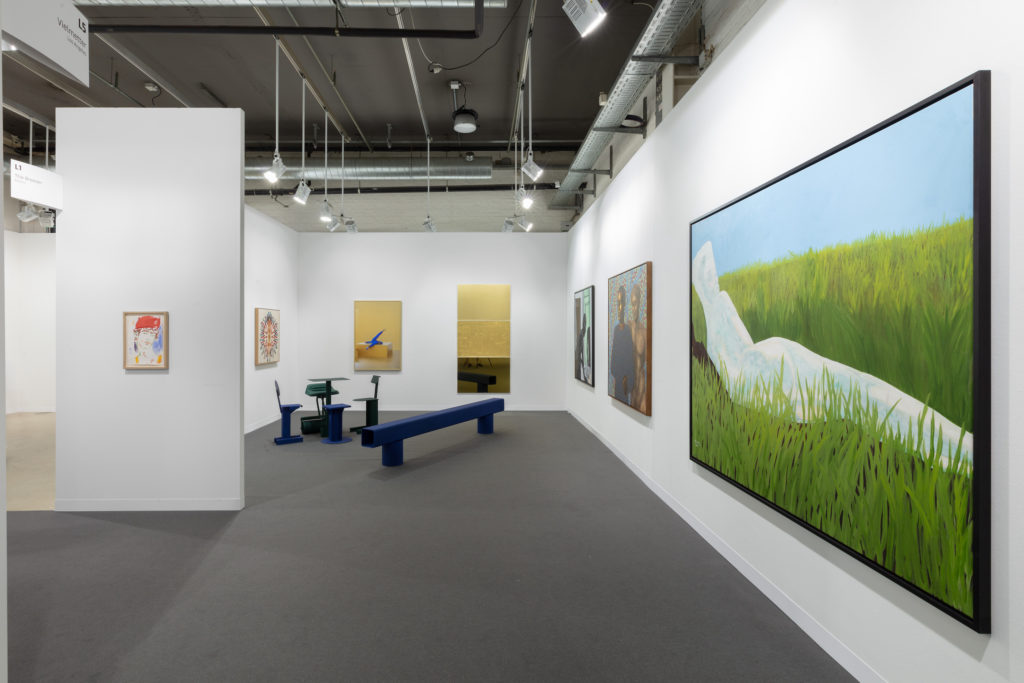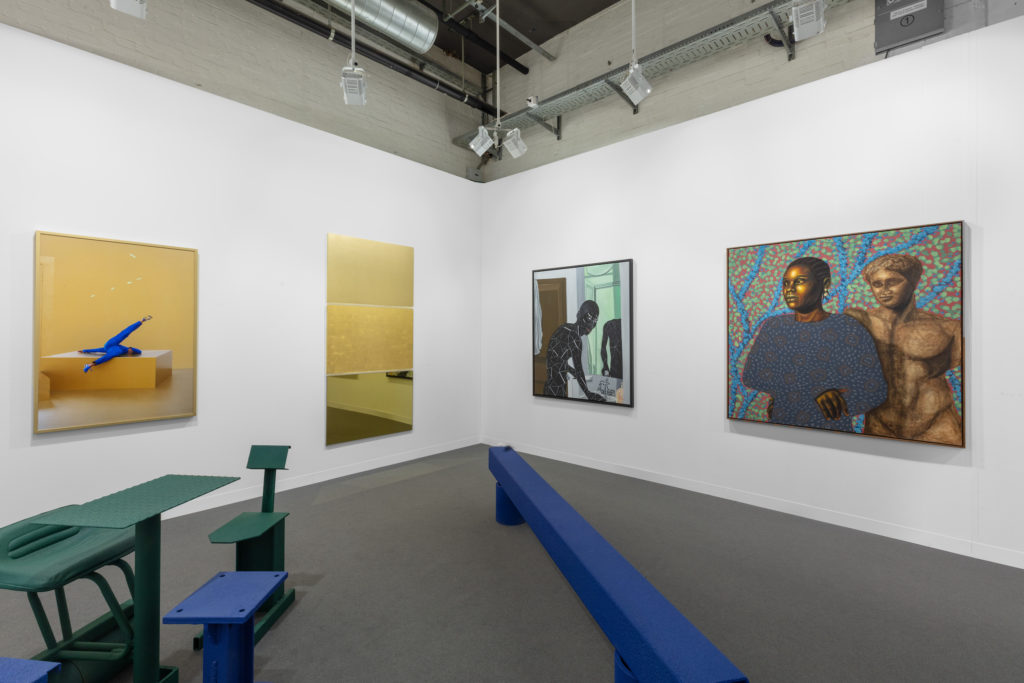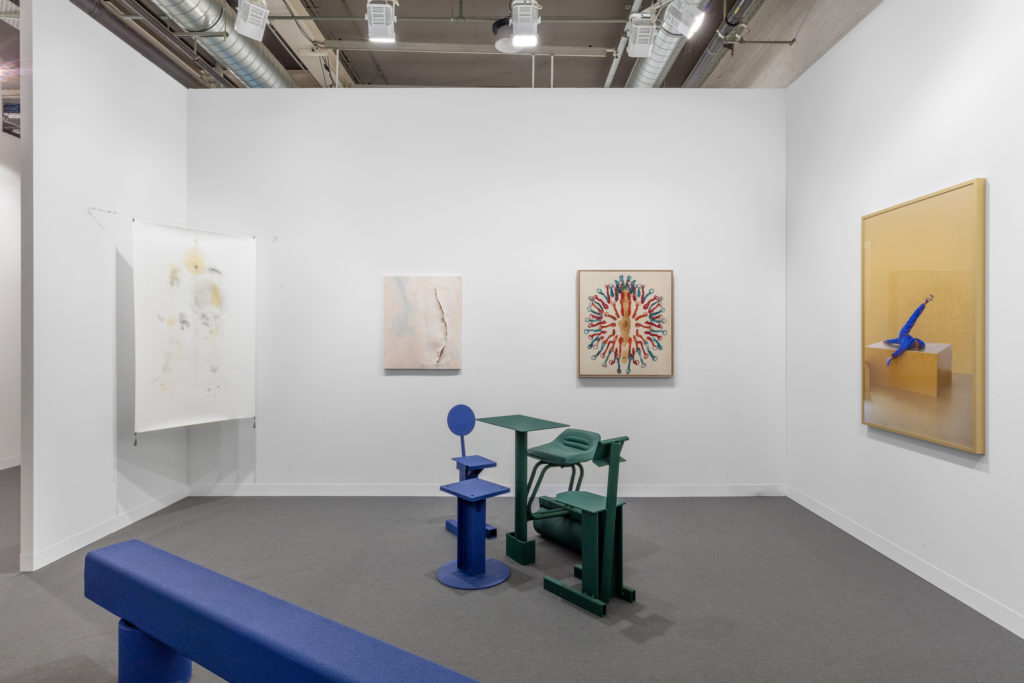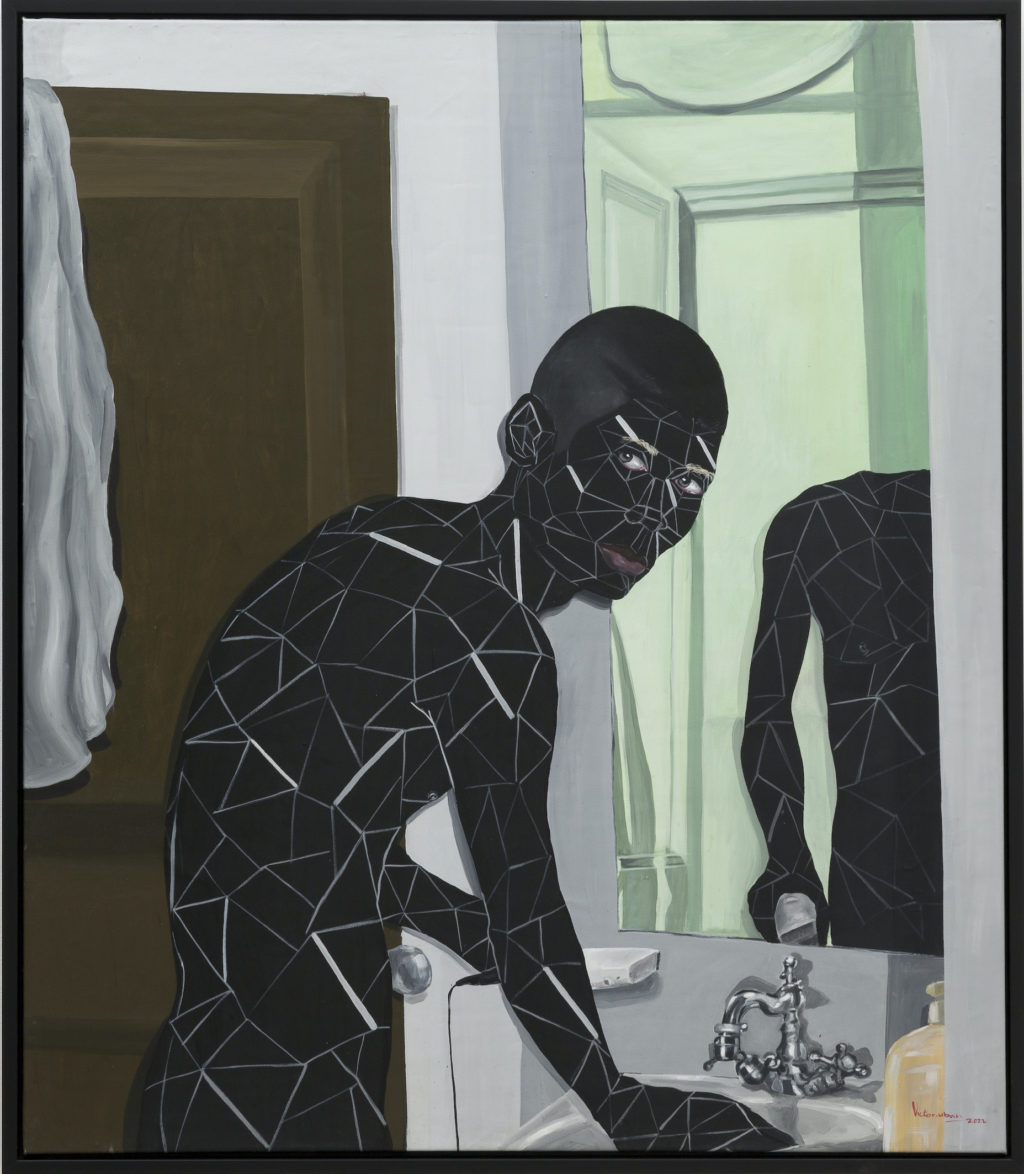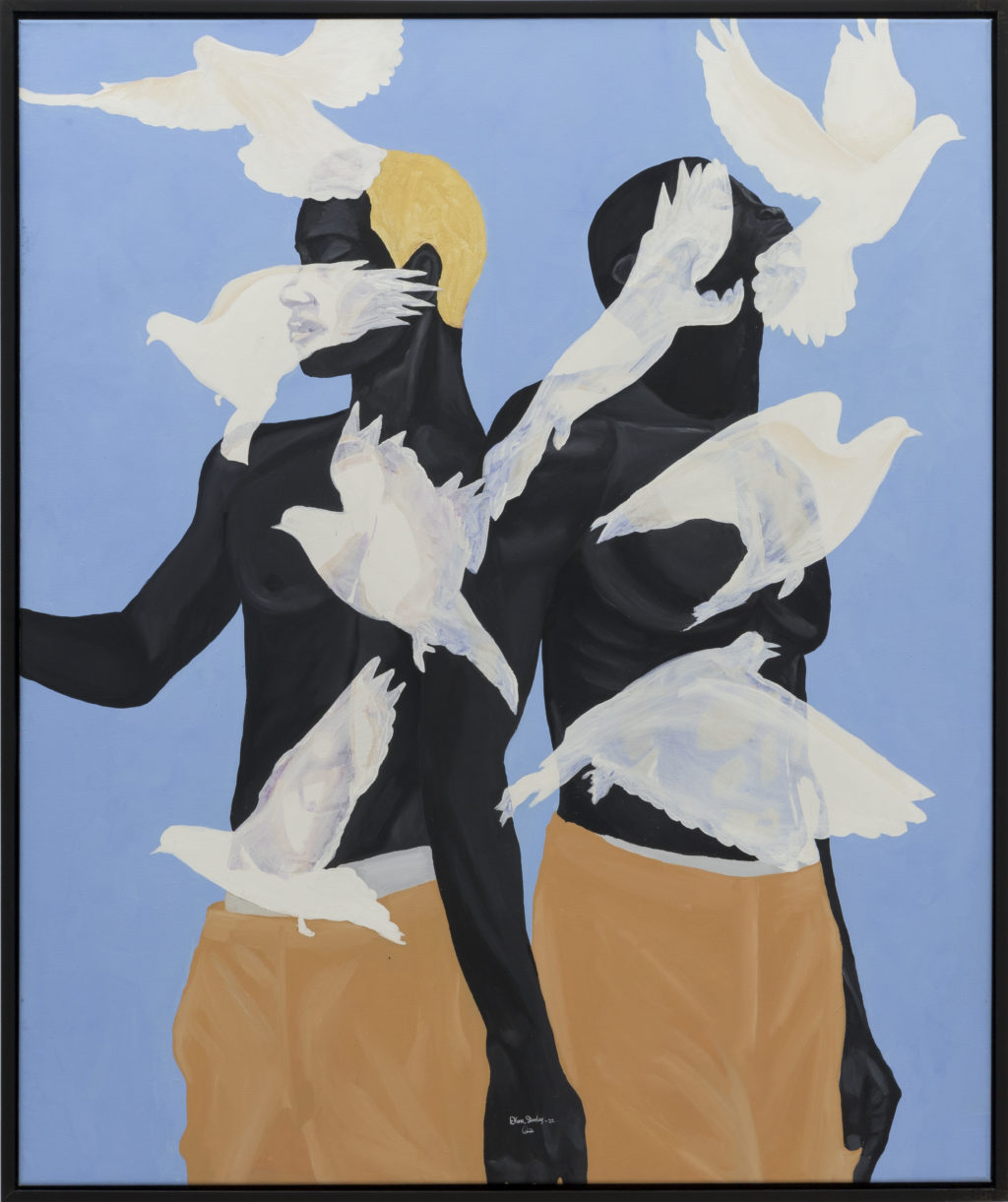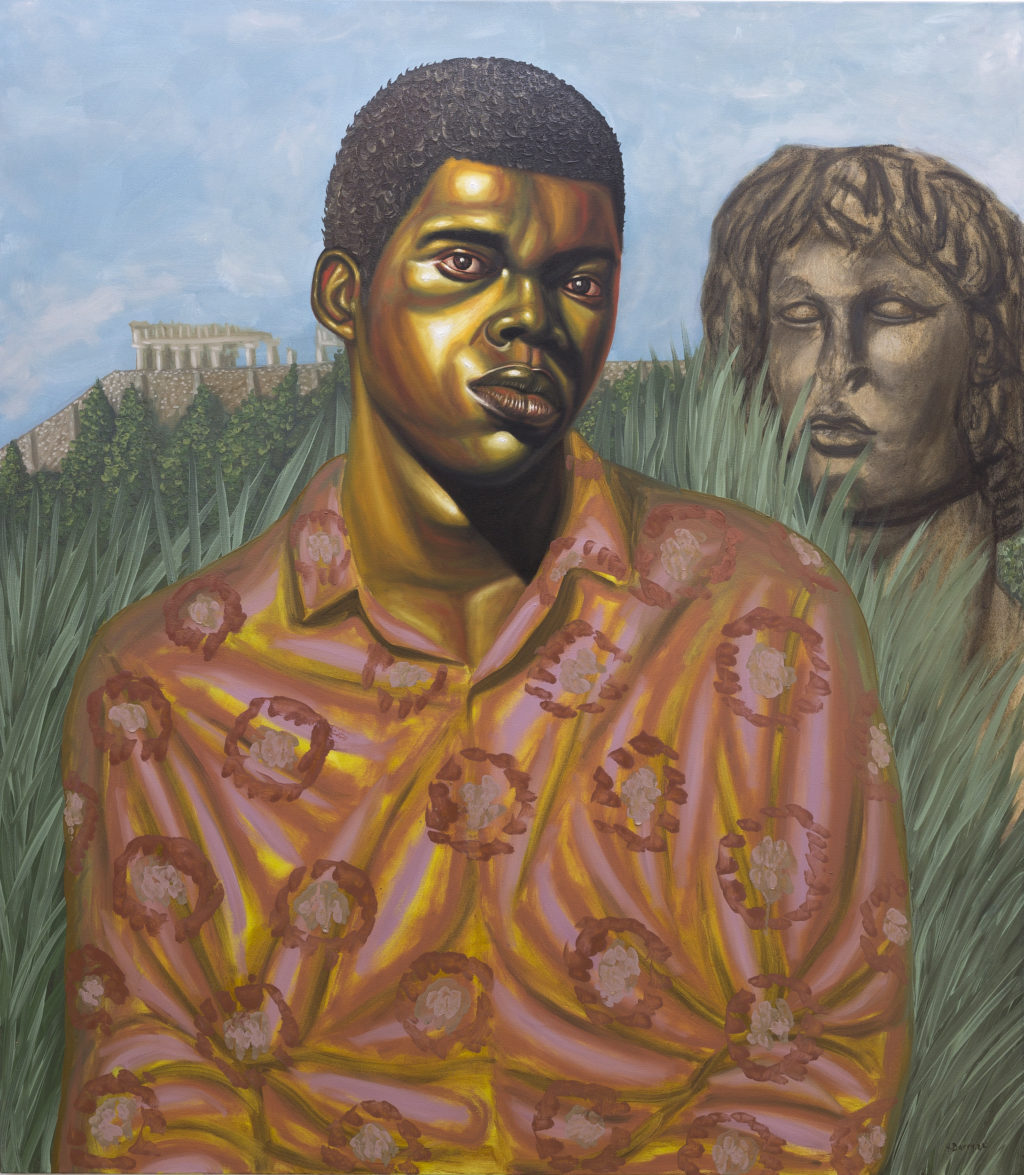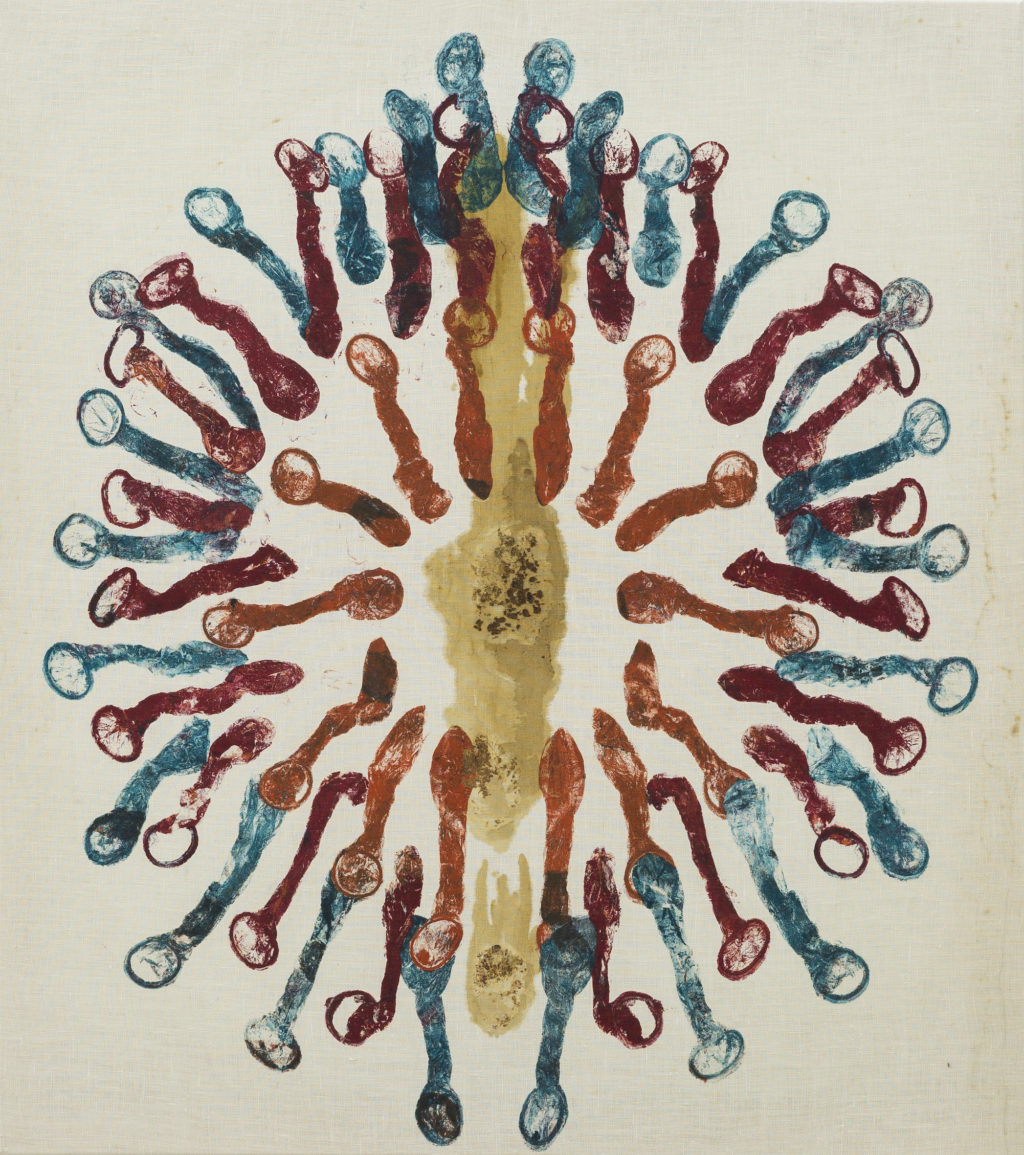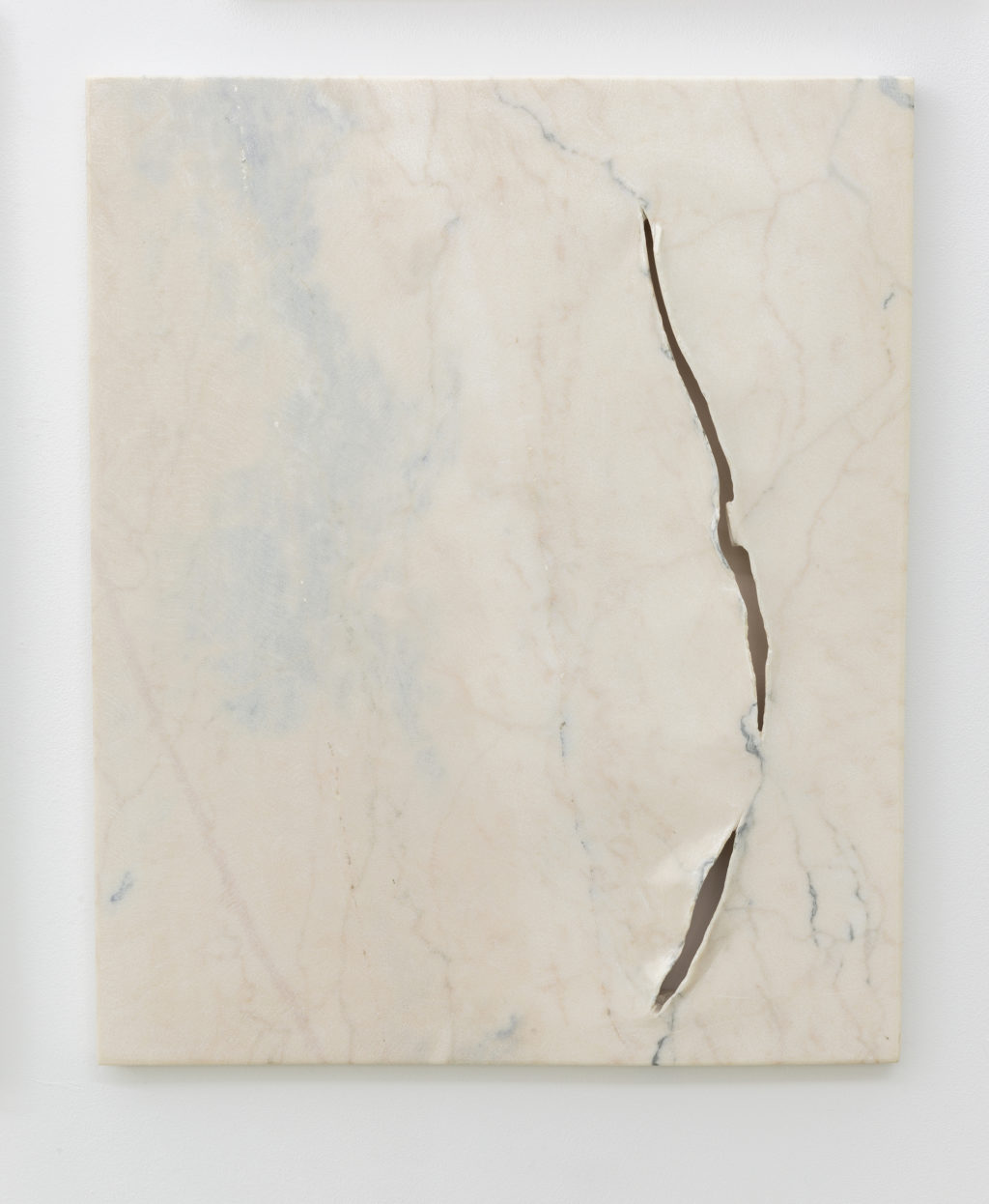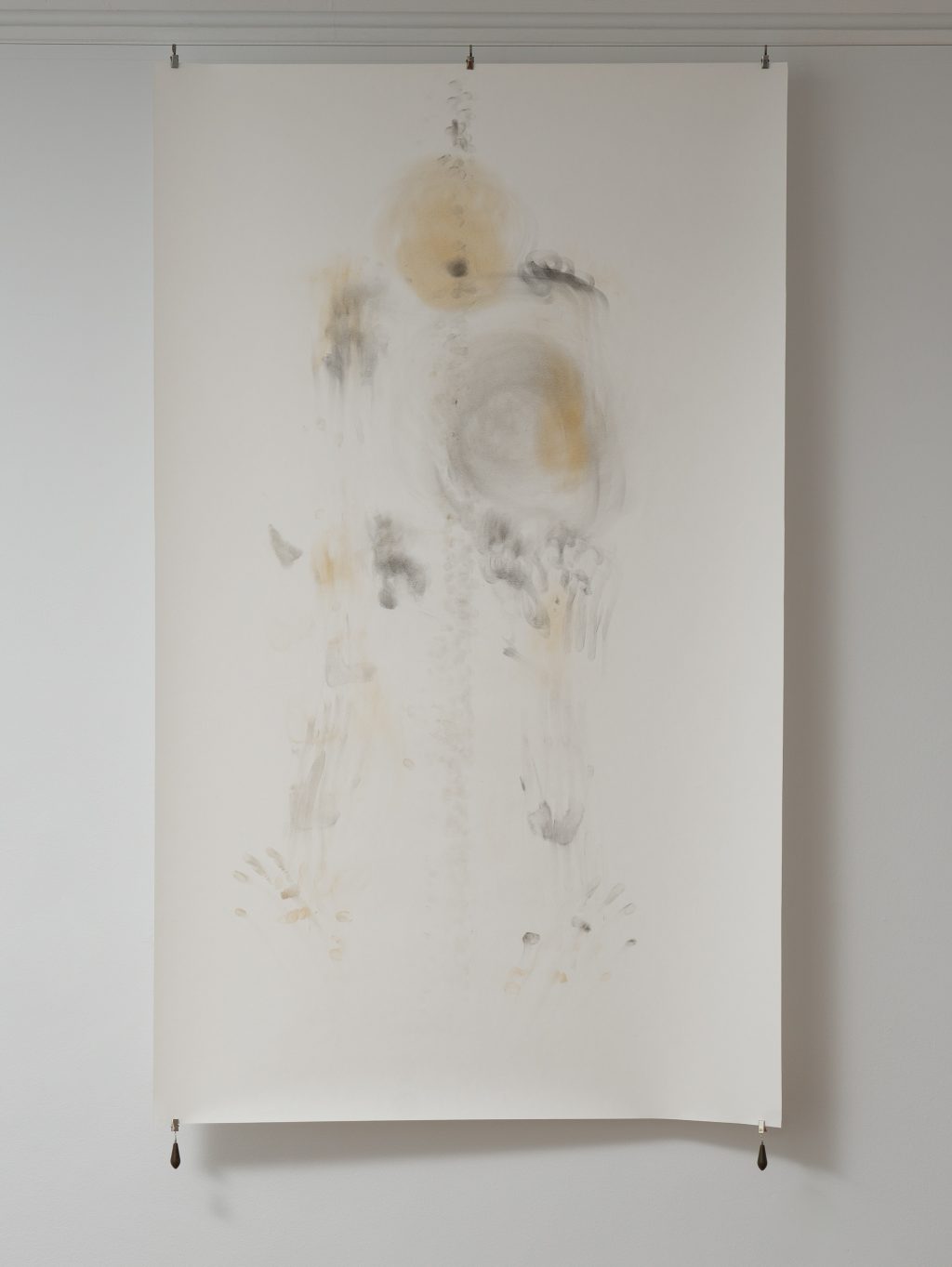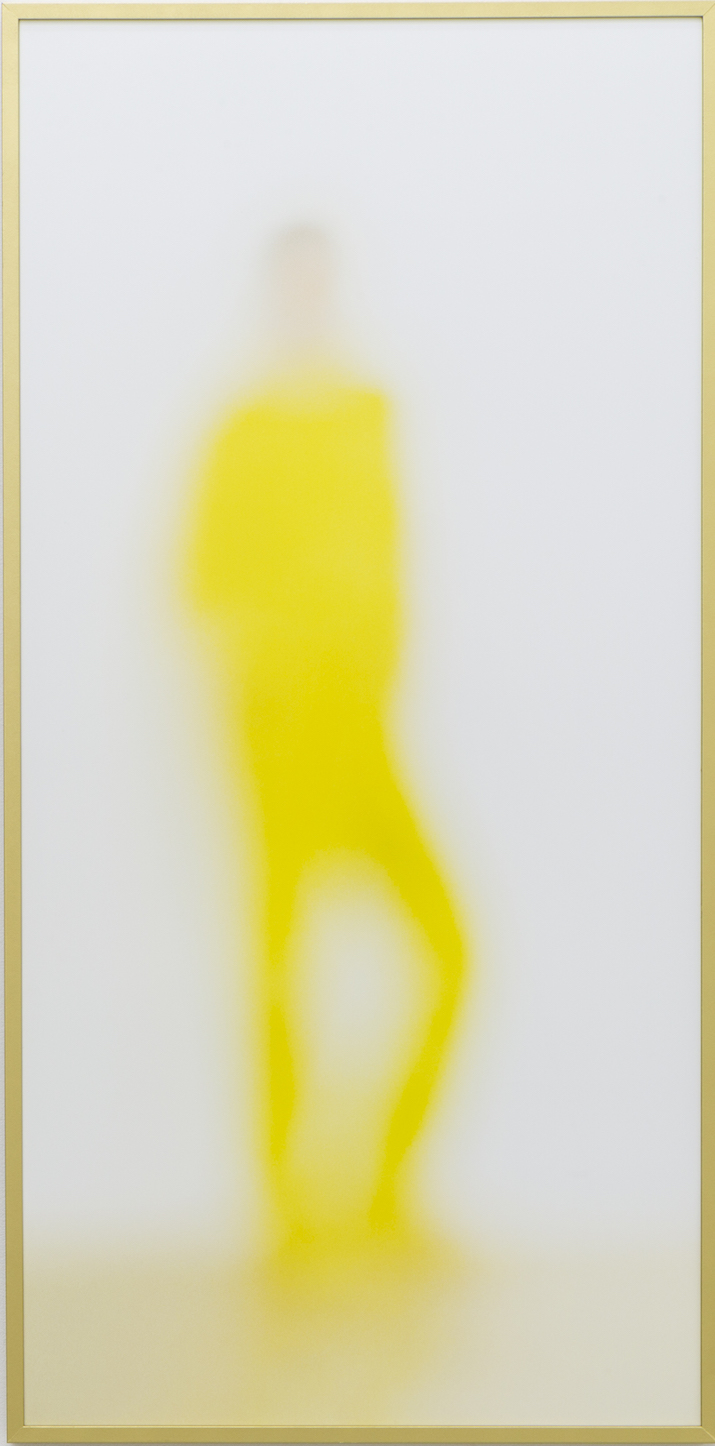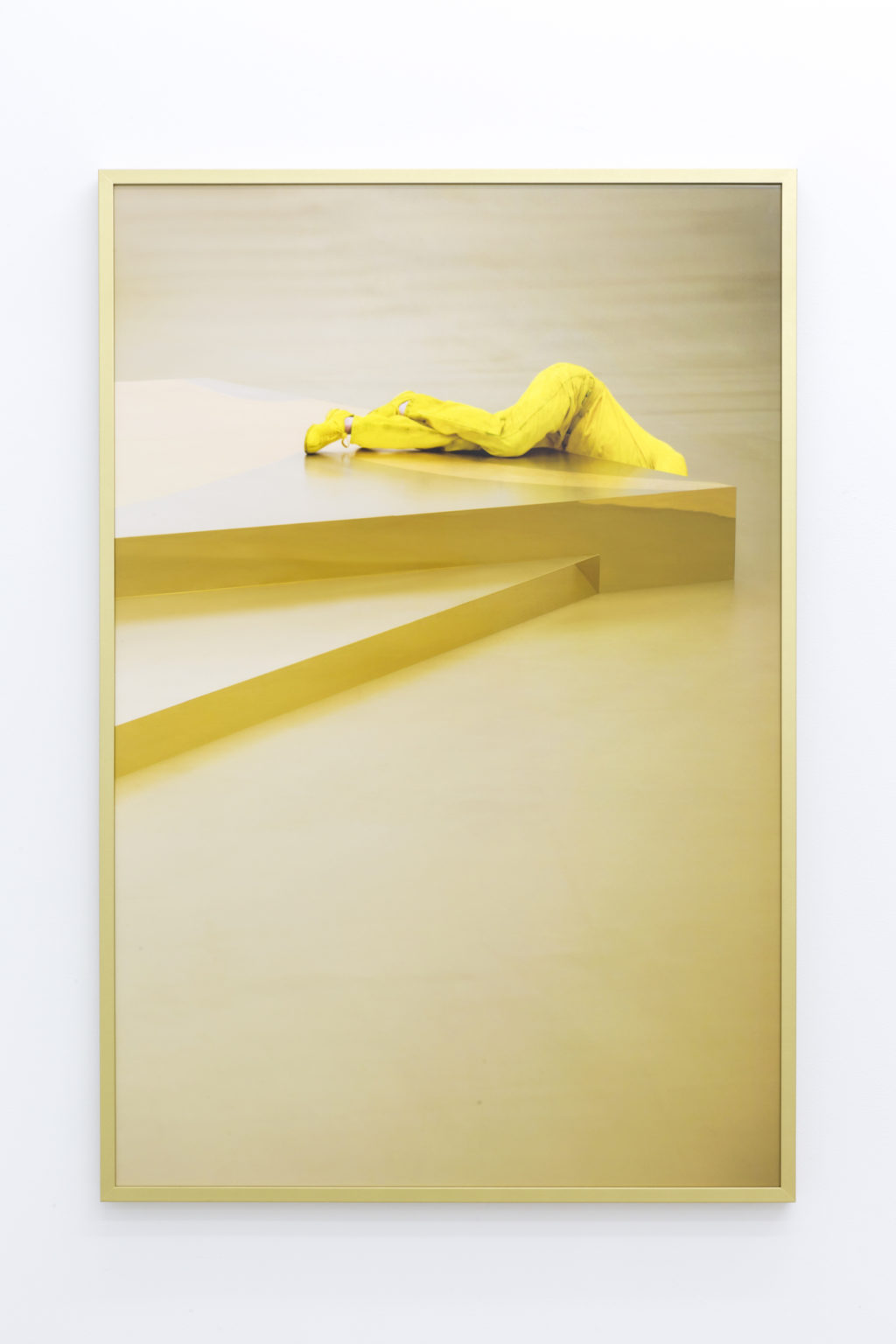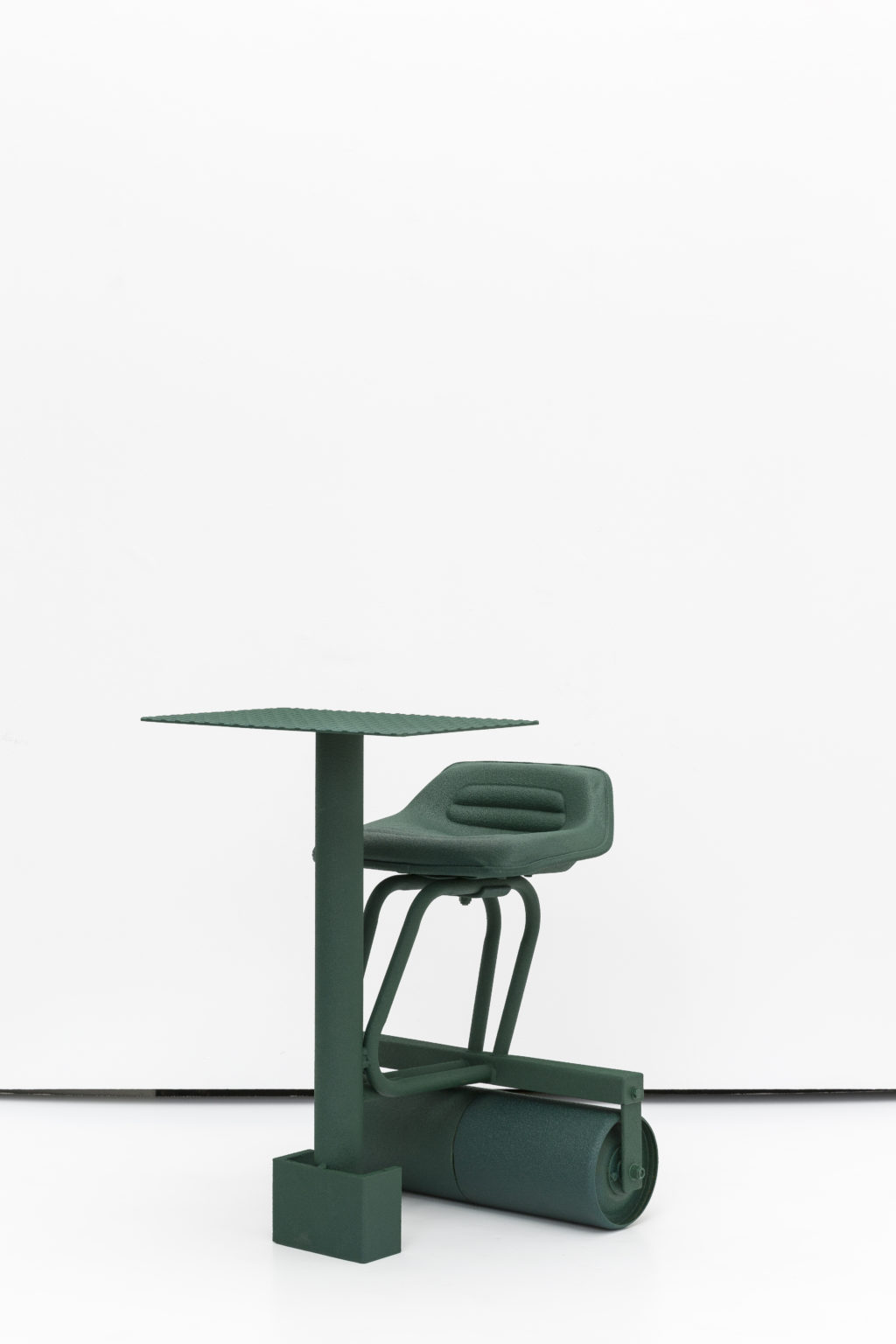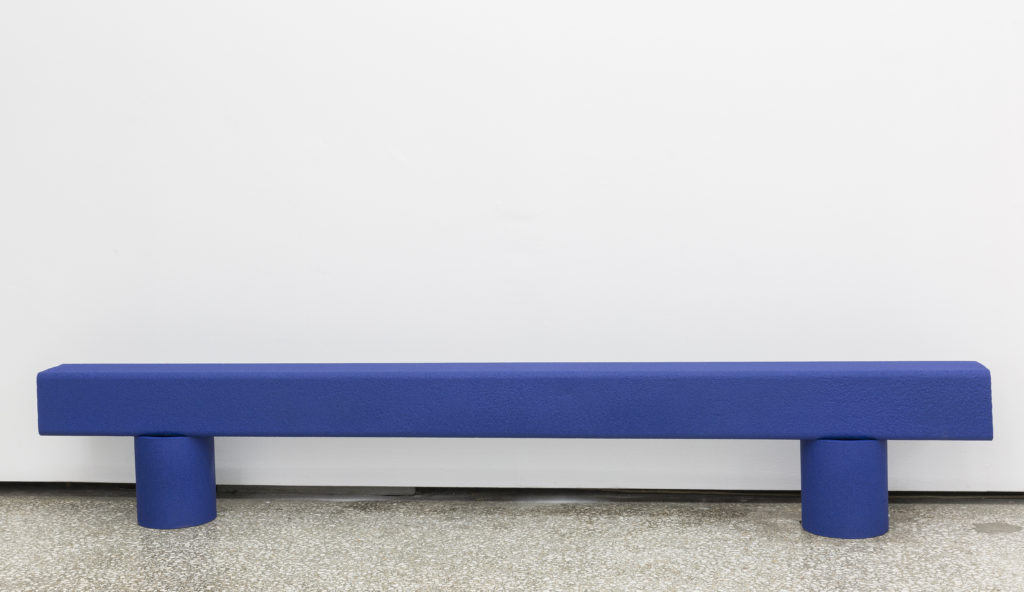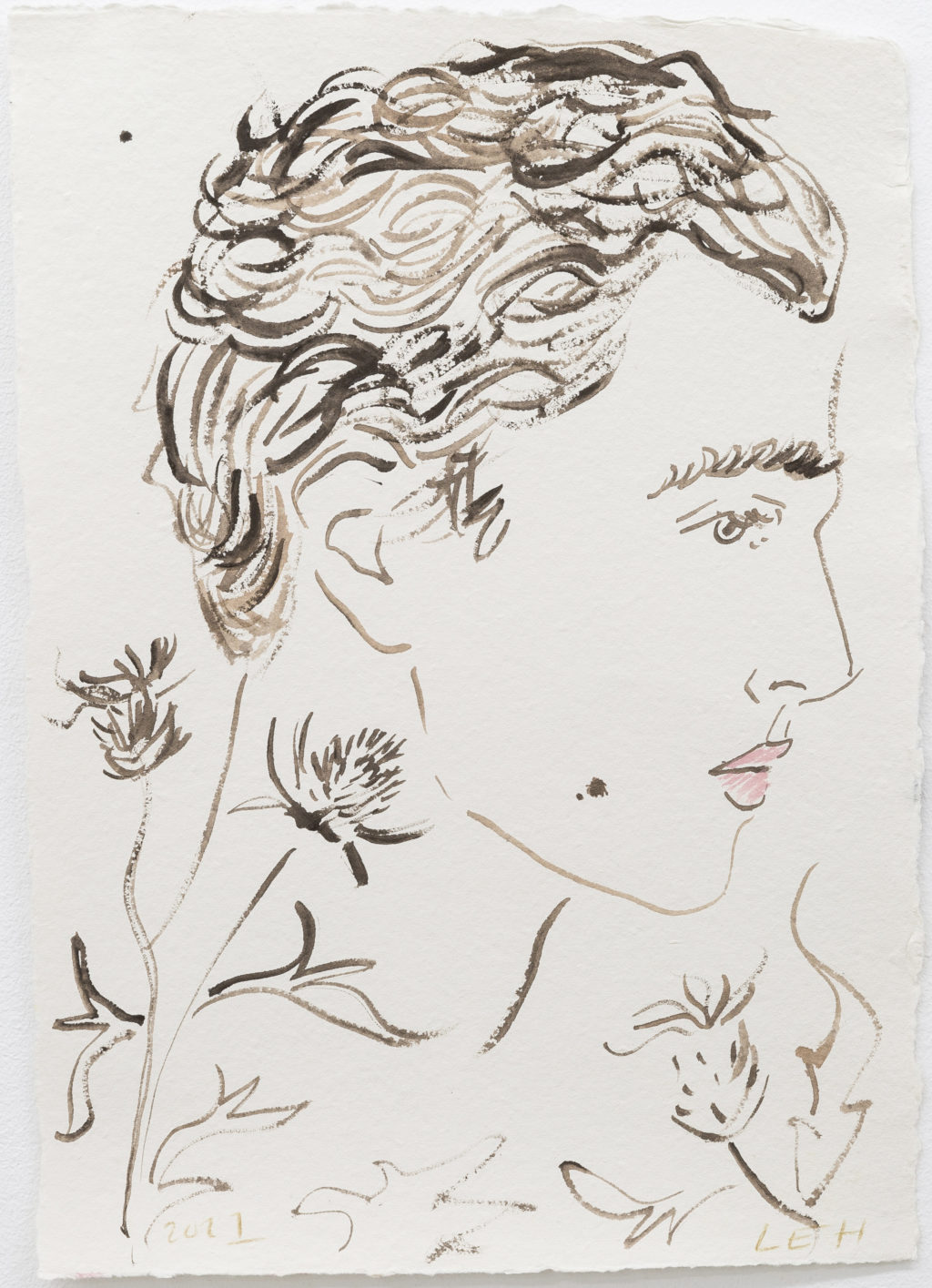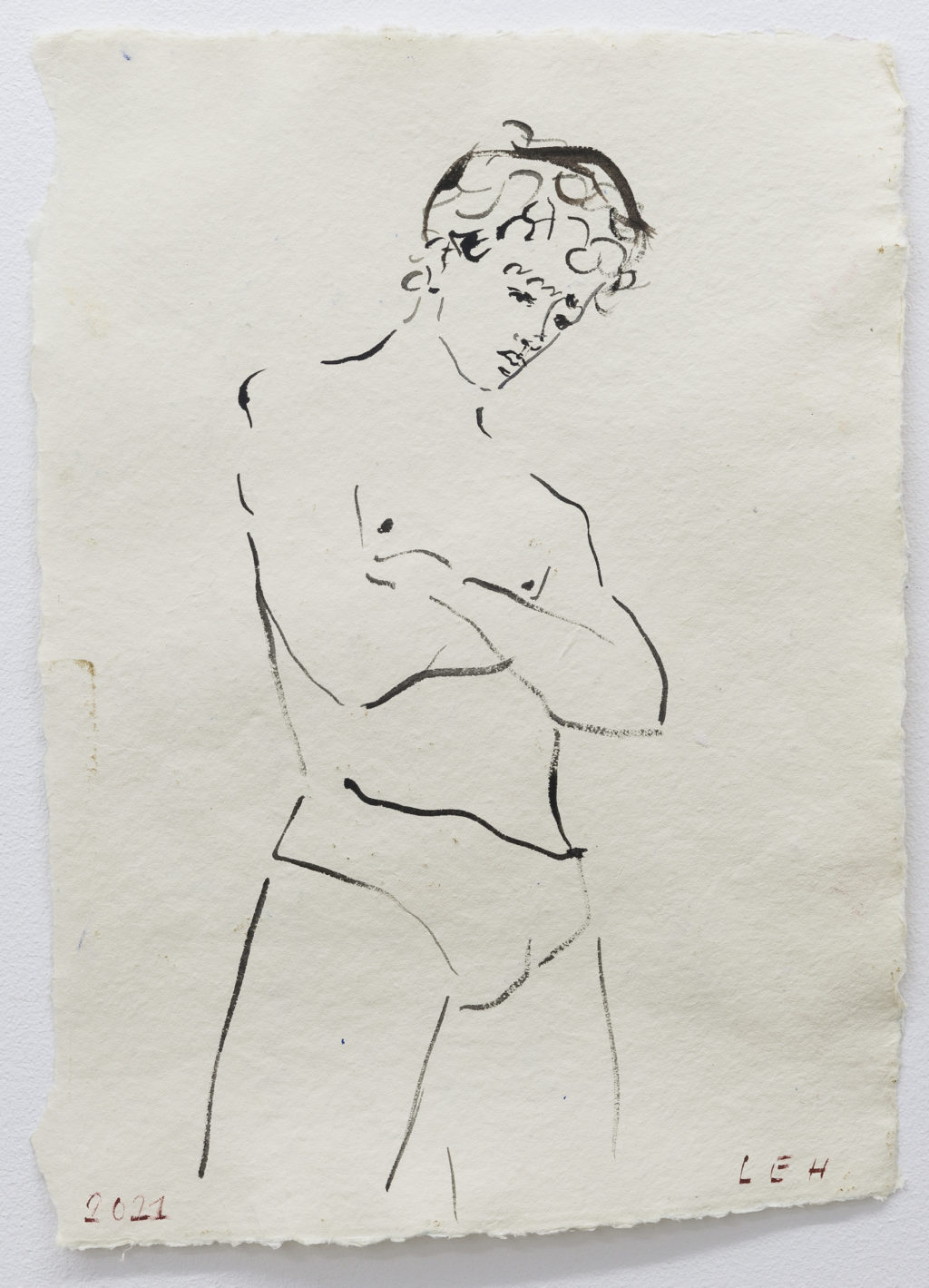The Breeder
Art Basel 2022
June 14, 2022–June 19, 2022Messe Basel, Messeplatz 10, 4058 Basel
The Breeder is pleased to present highlights from our recent and upcoming program including works by Ekene Stanley Emecheta, Luke Edward Hall, Maria Hassabi, Evi Kalogiropoulou, Andreas Lolis, Philippe Malouin, Georgia Sagri, Chrysanne Stathacos, Victor Ubah, Barry Yusufu.
EKENE STANLEY EMECHETA
Firmly rooted in his African heritage, Ekene Stanley Emecheta’s paintings portray figures with intentional elimination of their skin color, drawing the viewer’s focus to the figure itself and its surroundings. Diverting the attention away from the skin color, Emecheta intends to broaden the interpretation inviting the viewer to become physically and emotionally invested in the subject’s story.
His paintings on canvas and paper explore themes of identity, culture, and beauty and aim to capture the essence, heritage and truth of his proud subjects. Some of his protagonists are known to him -like Amoako Boafo, for example- while others are imagined. In both ways, Emecheta with his distinctive use of color and compositional technique attempts to unravel their identity telling a larger story of the Black experience; one that is steeped in joy, confidence and celebration.
Born in 1994, Ekene Stanley Emecheta is a self- taught artist, living and working in Lagos, Nigeria. His solo exhibition “Truthful Waters”, hosted at The Breeder in Athens in summer 2021 was reviewed at Frieze Magazine. His works are included in the collections of X Museum in Beijing, Xiao Museum in Rizhao, China, Akzo Nobel Foundation in the Netherlands, Comma Foundation in Belgium and Up Next Art Museum in Puerto Rico.
LUKE EDWARD HALL
Much of what Luke Edward Hall attempts to evoke in his drawings is a time and place, one that relates to his experiences but takes on an otherworldly aura in memory. In his new body of work, he is wittingly mixing history and archetypes, populating his canvases with bucolic Grecian scenes as well as English prototypes of the sailor or the fisherman. Positioning his protagonists in a world filled with colour and his distinctive motifs, Hall’s works seem to narrate open-ended short stories which the viewers are invited to interpret in their own way.
The romantic aesthetic of his works is informed by the past and suffused with various references, from the Bloomsbury Group, who very much believed in blurring the boundary between art and design, to Cecil Beaton and a Wes Anderson sense of colour. He regularly draws his friends, acquaintances and imagined characters in a distinctive, fluid style referencing the eccentric lifestyles of the 1920s and ‘30s. Luke Edward Hall is greatly inspired by Jean Cocteau, whose early- and mid-20th-century line drawings conjure the intimacy of romance, while the occupants of some of his more isolated scenes are imbued with the same emotional ambiguities that appear in the work of Patrick Procktor or John Craxton.
Luke Edward Hall (b.1989, UK) has worked on a broad range of commissions, from interior design and fashion projects to murals and illustration work for books, restaurants and hotels. He has collaborated with a variety of companies and institutions including Gant, Burberry, Lanvin, Christie’s, Royal Academy of Arts, Richard Ginori, Svenskt Tenn and Habitat. In September 2020 Luke’s first large interior design project opened in Paris: a thirty-three- bedroom hotel and bistro. He has contributed to a wide range of magazines and in March 2019 he joined the Financial Times as a weekly columnist in FT Weekend, answering readers’ questions on aesthetics, interior design and stylish living. September 2019 saw the release of his first book, Greco Disco: The Art & Design of Luke Edward Hall, published by teNeues. His solo exhibition “Figs and Honey and Sailing” was hosted at The Breeder in Athens in early 2021.
MARIA HASSABI
Maria Hassabi (b. Cyprus) is an artist, choreographer and performer, working with live performance, installation, sculpture, photography and video. Since the early 2000s, she has carved a unique practice that concentrates on stillness and the in-betweenness of bodies in motion, highlighting the relation of the live body to the still image and to the sculptural object. Considering conventions, hierarchies and codes existing in theaters, museums, and public spaces, her acclaimed works always reflect the given context of their presentation and are developed in dialogue with a site’s unique architecture both in terms of materiality and function.
In this body of work, which is a continuation of her live installation HERE presented in Secession, Vienna and OGR Turin, Hassabi is interested in the paradox between gold, a metal that endures time, and a dancer whose act evaporates the instant it is performed.
Hassabi’s photographs, paintings and sculptures rely on a desire for permanence. The dancer’s body is presented fragmented, contorted and even blurred, yet its stillness, which is at the forefront of her performances as an attempt to invite the viewer to consider the present moment, is now the given. Looking at the objects one can sense the dancer’s presence captured in time and space. These works ultimately challenge distinctions between permanence and ephemerality, presence and absence, wholeness and partialness.
Solo exhibitions and presentations include OGR Turin (2022); Secession, Vienna (2021); Pulitzer Arts Foundation, St. Louis (2019); MUDAM, Luxenberg (2019); Centre Pompidou, Paris (2018); K20, Kunstsammlung Nordrhein-Westfalen, Düsseldorf (2017-18); Walker Art Center, Minneapolis (2017); Stegi – Onassis Foundation, Athens (2017); MoMA, Museum of Modern Art, New York (2016); Hammer Museum, Los Angeles (2015); The Kitchen, New York (2019, 2016, 2013, 2011, 2006); Stedelijk Museum, Amsterdam (2015); Australian Centre for Contemporary Art, Melbourne (2014); Centre d’Art Contemporain, Geneva (2012); Performance Space 122, New York (2007, 2009). Selected group exhibitions and festivals include Museion, Bolzano (2021); River to River Festival, NY (2021, 2017, 2014, 2012); Gropius Bau, Berlin (2020); Performa, NY (2019, 2013, 2009); Serralves Museum, Porto (2019, 2015); documenta14, Kassel (2017); Cypriot Pavilion, 55th Venice Biennale (2013); Crossing the Line Festival, NY (2016, 2011, 2009); Kunstenfestivaldesarts, Brussels (2017, 2016, 2014); ArtSonje, Seoul (2015); steirischer herbst, Graz (2014); Panorama Festival, Rio de Janeiro (2012) amongst others. Hassabi has received the 2019 Performa Malcolm McClaren Award; 2016 New York Dance and Performance “Bessie” Award; 2015 Herb Alpert Award; 2012 President’s Award for Performing Arts from LMCC; 2011 Guggenheim Fellowship; 2009 Grants to Artists Award from Foundation for Contemporary Arts. She holds a BFA from California Institute of the Arts and is an Onassis Decade Resident 2019-2029. Maria Hassabi lives in Athens and New York. Hassabi is currently completing a residency at Luma Foundation in Arles.
EVI KALOGIROPOULOU
Evi Kalogiropoulou works with film, sculpture, and installation to portray dystopian environments and elements of science fiction based on urban stories from contemporary society amongst socio-political crises. Kalogiropoulou is intrigued by the idea of exploring the social context of the post-colonial and patriarchal environment of our current time. Her practice is informed by the desire to cross-pollinate modern philosophical and mystical theories with ancient philosophy, in an effort to cultivate new narratives. These theories also serve as a source material for her investigation of how urban environments are shaped and developed as a result of social and political crises that tend to adversely impact both immigrants and women.
In “Tiles” a rapper writes his new song, talking about his night out in the center of Athens. He sits in the kitchen of his apartment, where we see a mosaic floor and some colorful tiles on the wall. At night, a car wash transforms into a kickboxing studio, where the employees practice in pairs – yet all alone. The floor is mosaic and there are colorful tiles on the wall. “I created a moving image work inspired by the people I encounter during the quarantine – my friend, and my trainer. The common axis is formed by the mosaic floor, the tiles, and also
our personal relationship” states the artist.
Evi Kalogiropoulou (b. 1985 in Athens) lives and works in Athens and London. She studied at the Athens School of Fine Arts and the Royal College of Art London.
Her film Motorway 65 was selected to be part of the Cannes Short Film Competition 2020 and her film On Xerxes Throne was screened at the 61st Semaine de La Critique at Cannes Film Festival 2022. Her work was recently included in Eclipse, 7th Athens Biennial, curated by OMSK Social Club and Larry Ossei-Mensah (2021). Recently she had a solo show at Kunstverein Dresden titled “Delirious Athens”, while she was also included in the exhibition “The Same River Twice” at Benaki Museum Athens, organised by New Museum New York and DESTE Foundation Athens, curated by Margot Norton and Natalie Bell. She has screened her work at he Whitechapel Gallery, the Chisenhale Gallery and the British Film Institute, London. She is currently Artist in Residence at Somerset House, London.
Her work is included in prominent collections, among which is the collection of the Onassis Foundation.
ANDREAS LOLIS
Lolis presents us here with marble delicately carved in the size of a traditional canvas, in an attempt to test the limitations of traditional sculpture while simultaneously challenging assumptions of what painting could be, expanding the concept of a painting beyond its frame or surface. Questioning the traditional understanding of sculpture as grounded, static, and dense, Lolis pierces here the marble creating a void which reveals unseen spatial regions and expands the experience of space. As if creating a fictional dialogue between Henry Moore and Lucio Fontanta’s famous Tagli (Cut) series, Lolis’ piercing on the marble extends its surface outward in space while also opening up the space beyond.
Andreas Lolis (1970) lives and work in Athens, Greece. He is a graduate of the Athens School of Fine Arts (2002) and the Carrara Academy of Fine Arts (2005). He teached at the Salzburg International Summer Academy of Fine Arts (2016-2018).
Selected shows include: “Behind the theatre”, a production of Eleusis 2023 European Capital of Culture, co-organized with Aeschylia Festival 2021, curated by Christoforos Marinos; “May you live in interesting times”, 58th Venice Biennial curated by Ralf Rugoff; “Prosaic origins”, curated by Nayia Yiakoumaki, as part of NEON’s CITY PROJECT 2018; “Andidoron”, The EMST Collection, Friedericianum, Kassel, documenta 14, curated by Katerina Koskina; The Garden Sees, curated by Anna Kafetsi, Athens Concert Hall; Thessaloniki Biennial 2017 curated by Syrago Tsiara; The Body, the Soul, The Place, National Art Museum of China, 7th Bejing Biennial of Contemporary Art; 13th Biennale de Lyon “La Vie Moderne” curated by Ralph Rugoff; Yoko Ono Lumiere De L’Aube” at Musée d’Art Contemporain, Lyon, “Hell As Pavillion” that was curated by Nadia Argyropoulou in Palais de Tokyo in Paris and “Monodrome” the 3rd Athens Biennial (curated by Nicolas Bourriaud, Xenia Kalpaktsoglou and Poka Yio).
PHILIPPE MALOUIN
Philippe Malouin’s practice is located at the junction point between craftsmanship, sculpture and industrial design. In his new body of work, he explores the relationship of lighting, furniture and sculpture, threading the historical and the cultural through a modern lens. The works in the exhibition were produced in two parts in Brighton, UK and Athens, Greece and both their colors and construction are inspired by each city and its waste material that the artist discovered in scrap yards. Malouin creates here an interesting dialogue between materials, form and functionality and assembles these elements in a way that is both innovative and compelling, ensuring he captures all the possibilities the material has to offer.
This exhibition borrows its inspiration from the Dadaist tradition of découpé or cut out technique, the mechanical method of juxtaposition in which a written text is cut up and rearranged in order to create new meaning. Sourcing steel objects instinctively and rearranging them ad hoc, Malouin’s intention is to create here new meaning and value. These hybrid objects challenge our perception of what a three-dimensional object can be and appear both of this world and utterly futuristic. They are ultimately artistic manifestations where their functionality is not always delineated. By probing its boundaries to and beyond the limits, Malouin creates here a rather surprising language of form.
British-Canadian Philippe Malouin holds a bachelor’s degree in Design from the Design Academy Eindhoven. He has also studied at the École Nationale Supérieure de Création Industrielle in Paris and University of Montreal. He set up his studio in 2008 after working for English designer Tom Dixon. Malouin has also taught at the Royal College of Art in London between 2012-2015. His diverse portfolio includes tables, rugs, chairs, lights, art objects and installations. Malouin’s client list includes: Vaarnii, De Sede, Iittala, Nike, Please Wait to be Seated, SCP, Marsotto Edizioni, Resident, OTHR, HEM, Ace Hotel, Matter- Made, Established & Sons, Roll & Hill, 1882 ltd., Kvadrat, Umbra Shift, IZÉAesop. Malouin is represented by Salon 94 Design gallery in New York City as well as The Breeder gallery in Athens. He has recently won the Wallpaper* Magazine ‘designer of the year’ award. He has also been named President of the Jury at Villa Noaille’s Design Parade in France. Philippe Malouin solo exhibition “Steel Works” was hosted at The Breeder in Athens in November 2021 and was awarded with material innovation by Wallpaper Awards.
GEORGIA SAGRI
Sagri’s drawing extends the ongoing IASI series. These function as memory traces of her work with participants in one-on-one sessions, as “sensorial references” and as scores for the continuing treatments.
IASI (‘’Recovery’’ in Greek) involves the recovery of health in the physical sense. The deeper, fuller breath of life. It also involves the reclamation – in the contemporary world – of a civic horizon for performance established within Ancient Greek theatre. For example, at the Epidavros Amphitheatre in the Peloponnese, which rests near the Sanctuary of Asclepius, we find evidence of the interchange between theatrical roles, civic participation and the beginning of medicinal categories – of great inspiration to the artist. Sagri’s method addresses physical pain as a symptom of imbalance in social life (and are not to be mistaken for psycho-analytic sessions).
Georgia Sagri has exhibited internationally in various solo and group exhibitions: Portikus, Frankfurt/ Main, Germany (2018); Kunstverein Braunschweig, Germany (2017, 2018); Cycladic Museum, Athens Greece (2017); Museum of Modern Art, Warsaw, Poland (2016); Sculpture Center, New York, USA (2016); KW Institute for Contemporary Art, Berlin, Germany (2016, 2015); Forde, Geneva, Switzerland (2015); Kunsthalle Basel Switzerland (2014); MoMA PS1, New York, USA (2013); Museum of Modern Art, Warsaw, Poland (2013); Guggenheim Bilbao, Spain (2011); MoMA, New York, USA (2011); Macedonian Museum, Thessaloniki, Greece (2011); The Dakis Joannou Collection, DESTE Foundation, Athens, Greece (2006). Sagri has also participated in documenta 14 (2017), Manifesta 11 (2016), Istanbul; Biennial (2015), Lyon Biennial (2013), Whitney Biennial (2012), Thessaloniki Biennial (2011), and Athens Biennial (2007). In 2014 Sagri initiated Ύλη[matter]HYLE (hyle.gr) a semipublic/semiprivate space in the center of Athens, Greece. Her first monograph catalogue was published by Sternberg Press, following her solo exhibitions Georgia Sagri Georgia Sagri at Kunstverein Braunschweig, and Georgia Sagri and I at Portikus. In the summer of 2019 she was offered the Tenure Position in the School of Fine Arts in Athens in order to organise and run the first Performance Art studio.
Georgia Sagri’s solo exhibition Case L is currently on view at FriArt in Fribourg.
CHRYSANNE STATHACOS
Trained as a printmaker in Toronto in the 1970s, in the late 1980s Chrysanne Stathacos began a series of radical print-based works using Charles Brand etching presses in New York and Toronto — encompassing paintings, wearable items such as printed hair dresses, handmade artist’s books, and wall covering cloths used in installations and performances. These works were created by using this heavy-duty top roller etching press to print impressions of different objects directly onto linen or canvas, building up layers of impressions. The linen used in her performative printed hair dresses often consisted of scraps left over from her friends in General Idea’s AIDS paintings which were created around the same time. The series of paintings that emerged from this process began with printed hair paintings and morphed into rose and ivy paintings (and later marijuana leaves too!) and then the condoms, which were used to produce a series of condom mandala paintings and the pop pops.
The political resonance of the various condom printed paintings is very clear and speaks to that moment of 1989-1995 in North America: the struggle for abortion rights, the AIDS crisis, the Gulf War. Around this time Stathacos was also involved in The Abortion Project, a collaboration with Kathe Burkhart, that began with an installation at Artists Space circa 1989 commemorating Simone de Beauvoir’s Manifesto of the 343. The pro-choice installation with an expanded women artists group show subsequently travelled to New Langton Arts, San Francisco; Real Art Ways, Hartford, Connecticut; and Hallwalls, Buffalo. Stathacos also attended the WAC (“Women’s Action Coalition”) meetings that took place in New York City starting in 1992.
The paintings bring together all this turmoil in a striking and original way: a second wave feminist concern for the politics of bodies and selves, feminine fluids, flows and formlessness, came together with the specific concerns of the AIDS crisis, in which condoms as symbols of safe sex took on an almost talismanic power. The paintings speak to the importance of feminist practices and politics to the AIDS movement — but also to the fact that there were a lot of women (including Stathacos) who were taking care of friends who had AIDS in New York and Toronto.
Chrysanne Stathacos is a multidisciplinary artist of Greek, Canadian and American origin. Her work encompasses printmaking, textiles, painting, installation, and conceptual art. Stathacos is heavily involved with and influenced by feminism, Greek Mythology, eastern spirituality, and Tibetan Buddhism, all of which inform her current artistic practice. Stathacos has exhibited in museums and galleries internationally over the past 30 years, including “Oracle Drawings”, Documenta 14, Athens; KW Institute for Contemporary Art, Berlin; Witte de With Centre for Contemporary Art, Rotterdam, Power Plant Contemporary Art Gallery, Toronto among others.
VICTOR UBAH
Based in Lagos, Nigeria, Victor Ubah reflects upon social infrastructure, self- determination and identity in his artistic practice. Influenced by the anime and popular cartoon animations he watched throughout his adolescence, he was inspired by an image’s ability to communicate intricate ideas about identity and personality. He was further inspired by Cubism, the early 20th-century avant-garde art movement led by Pablo Picasso and Georges Braque, that revolutionized the representation of three- dimensional forms by painting from many viewpoints, rather than a singular perspective. In a body of acrylic portraits, Ubah paints his subjects as multidimensional personalities existing within one dimensional social structures. His poetic visual language marries vibrantly colored, one-dimensional background with expressive cubist geometry. commenting on the symbiotic correlation of the individual to their community. Ubah translates the uniqueness of each personality by rendering their faces in a mosaic of protruding cubist forms while attending to their gaze with a naturalist style. His attention to each figure’s personal fashion expressed through bold textile patterns and rich color palettes amplify his ethos that “there is no feeling of being alive without a sense of identity.”
Victor Ubah (born 2000) lives and works in Lagos, Nigeria. His work has been included in major group and solo exhibitions internationally including The Xiao Museum of Contemporary Art, Rizhao, China (2021-2022, group); Jeffrey Deitch Gallery, Los Angeles, CA curated by Kehinde Wiley (2021-2022, group); CFHILL, Stockholm, Sweden (2021, group) amongst others. His work is included in notable private and public collections like ICA Miami, Xiao Museum in Rhizhao, China, Up Next Museum at Puerto Rico amongst others. In September 2021, Victor Ubah participated at The Breeder Open Studio which concluded with a solo presentation of his work at the gallery.
BARRY YUSUFU
Barry Yusufu utilizes a unique blend of color and expressive backgrounds to create powerful poignant portraits that tell the story of his people. Yusufu describes his art as Kolo art, meaning “madness in a sane way,” and he leads a movement of Nigerian artists called The Kolony. He melds materials like coffee and charcoal to capture the hue of his people highlighting in this way the artistic power pigment holds when trying to express an identity.
Yusufu draws inspiration from his community painting those around him. In his own words, “My people are my inspiration, I paint the stories of my people”. He utilizes symbolism and allegory to capture a sense of his subject’s lives and experiences and to discuss notions of Blackness and identity. Painting becomes here a medium for rejoicing the existence of his protagonists in an attempt to immortalize them. Looking at art historical books whilst growing up, Yusufu saw no representation of his own people. “As an African from Nigeria I tell the story of my race as well. I see there has been hardly any documentation of my people in the past, and I’m trying to do my part.” Through these compositions he is reimagining a space in art history that was previously inaccessible to them, inscribing them in this way onto history. In his earlier works, we see a hallo circling the face of his sitters, much like the hallo we see in religious depictions of saints. The hallo does not speak here to an expression of emotion, but rather it is the artist’s attempt to re-represent his people in a state of glory and higher power and make them see that they are worthy of such representation.
In his new body of work, Yusufu draws inspiration from the bronze artefacts, known as the Benin bronzes, which were looted from Nigeria from British troops in 1897. Here the artist paints ordinary people in everyday scenes in bronze colors on his canvas in an attempt to immortalize them and offer to his people a glorious form of representation.
Utilizing a symbolic painterly language to explore issues of representation and identity, the artist’s styled portraits compel the viewer to delve into a close, focused observation of his subject’s shared history and experiences to life reminding us how far people can go when they are united.
Born in 1996, Barry Yusufu is a self-taught artist living and working in Abuja, Nigeria. His work was recently featured in the exhibition Stop, Listen! at CFHILL, Stockholm (2021); Liminality in Infinite Space, curated by Azu Nwagbogu, at The African Artists’ Foundation, Lagos (2020) and in the virtual exhibition Say it Loud, curated by Destinee Ross-Sutton at Christie’s, New York online platform (2020). In spring 2022 Barry Yusufu participated at the Breeder Open Studio in Athens.
